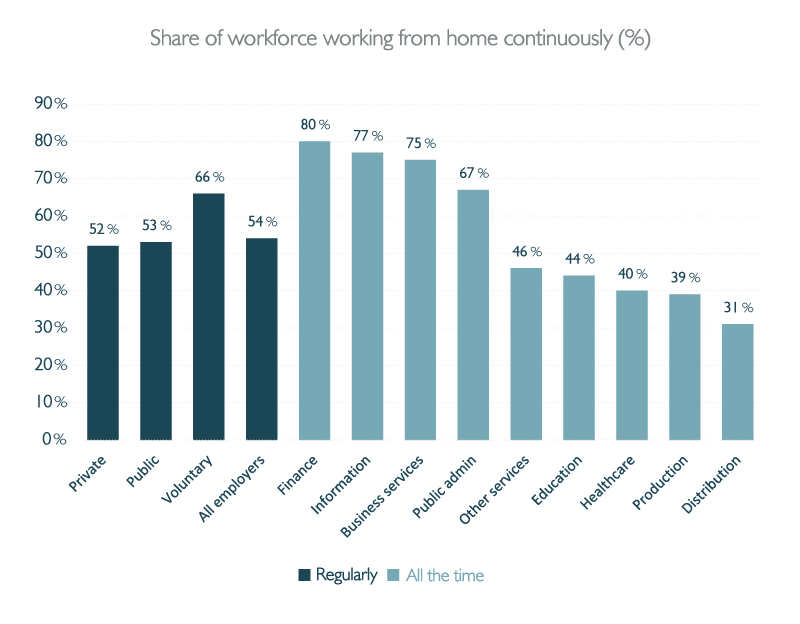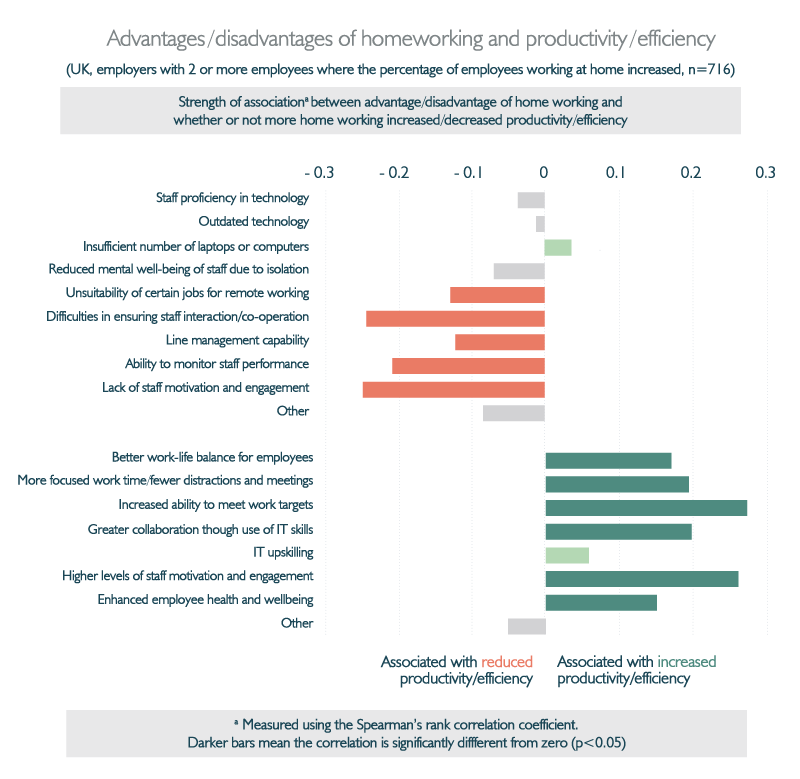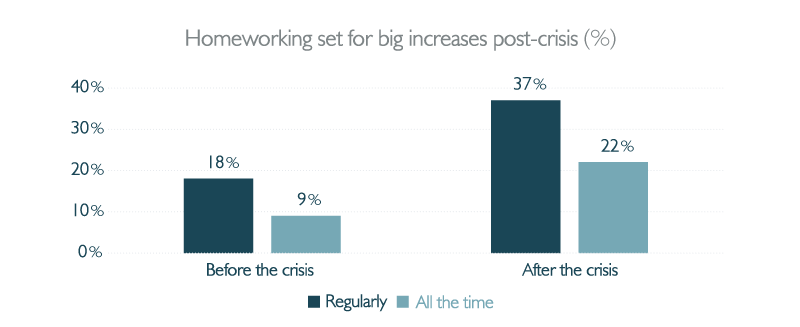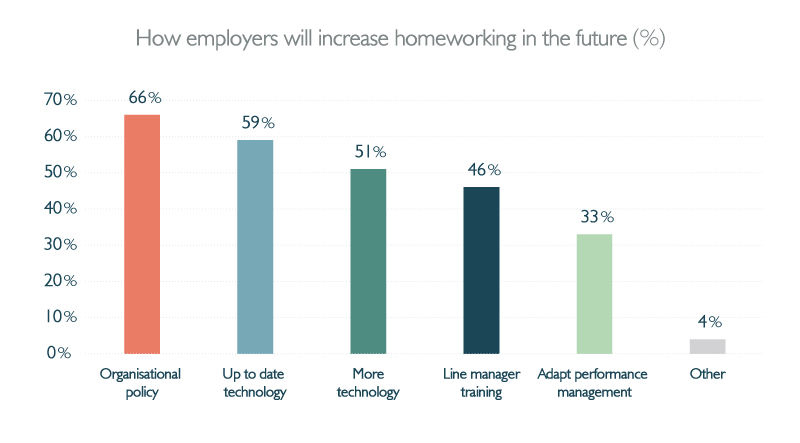CIPD Research: What will the post-pandemic workplace look like?
In its recent report, “Embedding new ways of working: implications for the post-pandemic workplace” the CIPD takes a look at what the implications are likely to be for the post-pandemic workplace. With so many uncertainties at the moment, it might feel challenging to think too far ahead. Yet what we are experiencing now will inevitably have an impact and some of that could turn out to be positive.
The CIPD’s report is based on the responses of 1,046 UK-based organizations, and supported by more in-depth analysis of interviews with 15 companies. It paints a mixed picture but it isn’t all doom and gloom. While there is a lot of evidence of the struggles businesses are facing at the moment, there are also positives to be found. Just under one in five employers plan to increase employees’ wages. Almost half of employers have no plans to freeze recruitment. And flexible working – particularly home working – seems set to have a real boost going forward.
Home working has taken centre stage
It’s no surprise that as a result of the pandemic, the number of people working from home suddenly rose significantly. Over 40% of employers reported that between 75% and 99% of their employees were continually working from home. 35% of employers said that was the case for up to a quarter of their workforce. There was very little difference between the private and public sector overall, although the private sector was more likely to have the entire workforce constantly working from home (21% versus 11%) and there were variations by industry.

How have employees and organizations found the home working experience?
The report found the main benefits were centred on the creation of a better work–life balance (61%), improved collaboration (43%) and a greater ability to focus with fewer distractions (38%). Other ad hoc benefits included the savings in commuting time and associated costs, and greater flexibility in managing caring responsibilities. Anecdotally, home working seems to have levelled the playing field, making people seem ‘more human’ and focused on finding solutions together rather than taking the attitude of ‘it’s not down to me to sort that’.
It’s not all positive though. Certain jobs simply did not lend themselves well to the home environment – 48% of employers raised this as the biggest challenge. Some employees struggled with home environments that could not be readily adapted for work and for others the sense of isolation was difficult: 47% of employers were concerned about reduced mental wellbeing amongst employees and 36% about the reduced levels of staff interaction.
Read more: COVID & the employee experience – leadership lessons from McKinsey research
While some felt collaboration was a real benefit, it also was mentioned as a negative for others. It seems that for some, the lack of physical face-to-face contact inhibited the process. Clearly home working has been experienced in very diverse ways according to personal circumstance and the role itself.
What has been the effect on productivity?
Pre-pandemic, one of the often-cited concerns organizations had about remote working was that it could damage productivity levels. The overall responses in this research suggest that doesn’t seem to have been the case. There was a balanced distribution of responses about whether productivity was perceived to have been lower or higher than previously because of home working.
A deeper dive into those responses shows the companies most likely to report improved productivity were those who had also experienced benefits like improved work–life balance, greater focus, an improved ability to meet targets, and enhanced coordination and staff motivation. Factors like the suitability of technology didn’t seem to have as substantial an impact. It appears that productivity was more connected to how employees felt.

For employers who thought home working had negatively affected productivity, the reasons were more closely related to issues like poor collaboration and low levels of employee motivation and engagement. Where productivity had improved, it appears to be more connected to factors like better focused work time and greater work–life balance.
What does all this mean for the workplace of the (near) future?
It isn’t just the “here and now” snapshot that’s interesting; it’s also what all of this is looking likely to mean for workplaces in the not-too-distant future.
For some roles home working won’t ever be possible but there are clear signs that employers are now considerably more receptive to the idea of increasing the amount of remote working within their organization. Regular (at least one day a week) working from home is expected to rise to 37% of the workforce on average. That’s around double the level before the pandemic. Before the crisis, around 9% of employees were working from home all the time – that’s predicted to rise to 22%.

70% of respondents intend to allow working at home on a regular basis, as compared with the pre-pandemic figure of 45%. Prior to the first lockdown, only 15% of employers had more than half of their workforces regularly working from home. Now, 40% of employers anticipate that level of employees being able to do so.
44% of employers intend to take additional measures or increase investment to help this all happen. They include changing organizational policy, improving the technology, and improving line manager skills in managing staff working at home.

The research doesn’t suggest there will be any major shifts in the forms of flexible working available. Around a third of employers plan to increase existing flexible working or introduce new flexible working arrangements. A third have no plans, and around a third are undecided. Other than homeworking, it seems most likely that there will be a fairly even increase in other flexible measures across the board.
Read more: Engaging remote employees – 10 companies leading the way
What does seem likely to materialise is a more blended approach: one where employees are able to do some working from home, but also have access to an office environment perhaps as a more collaborative workspace or a hub to carry out specific activities. The demand for office space may reduce, but it seems unlikely that it will completely disappear.
With the employer mindset shifting towards a greater recognition of the benefits of remote working, the pandemic experience will have put them in a better position to capitalise on the benefits and minimise the challenges. With the first lockdown, the move to home working was sudden; it was introduced in an emergency situation with very little time available for a smooth transition.
Employers now have the opportunity to take a more considered approach. Working methodologies can be created and outdated technology and equipment issues can be addressed in a focused way to ensure they offer the right level of support for truly effective ways of working post-pandemic.
Further reading: How do you show your people they matter? From small gestures to professional opportunities, here’s a list of our favorite employee recognition ideas.


 30 ideas to help a new starter in their first week
30 ideas to help a new starter in their first week
 The value of external feedback in the workplace
The value of external feedback in the workplace
 Expand the power of recognition with Partner Appreciation
Expand the power of recognition with Partner Appreciation